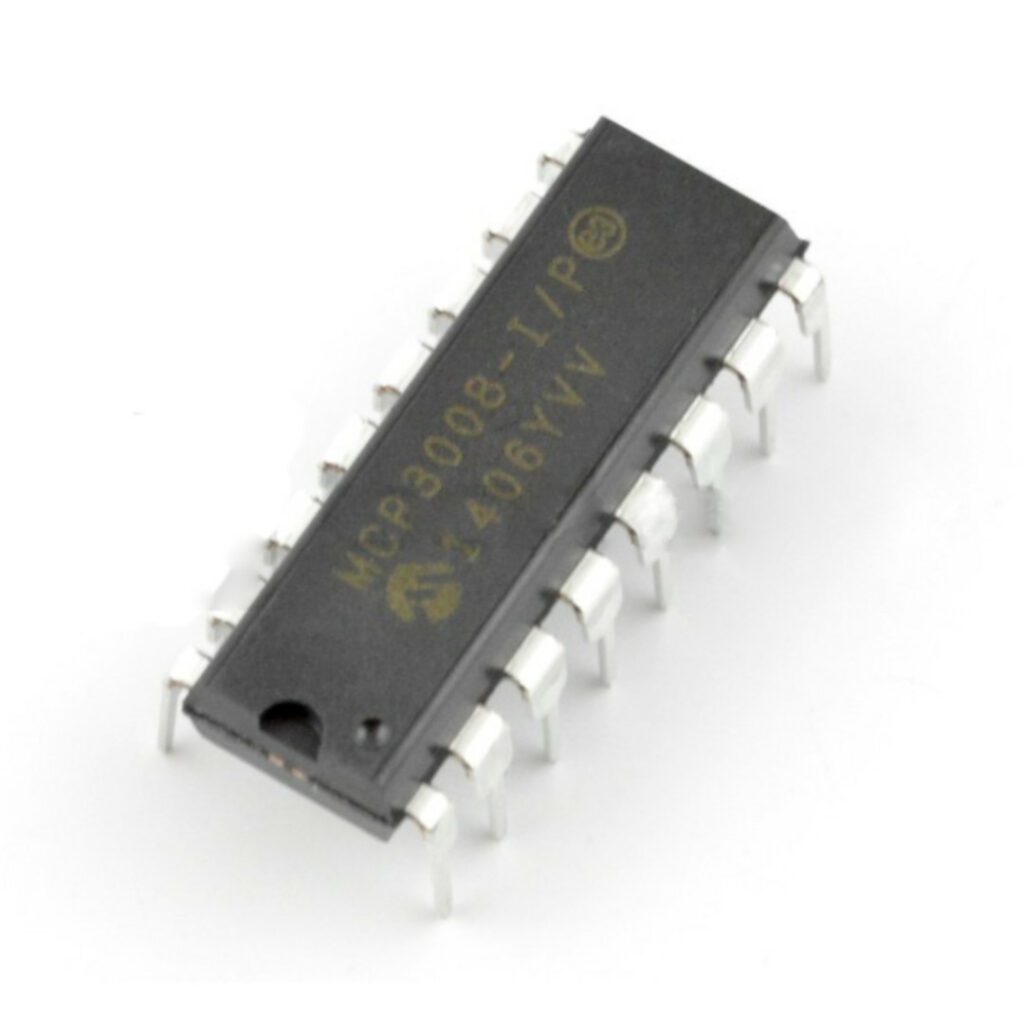Table of Contents:
An AC converter is used to convert various analog signals into digital form, i.e. a numerical form that corresponds to the voltage (less commonly, current) at the input on a specific scale.
What is an AC converter?
The A/C converter is designed to convert an analog signal, often a voltage signal, into a digital value. The methods of processing this signal are divided into direct and indirect. In the case of the indirect method, we are first dealing with the transformation of the processed quantity into another (such as time or frequency), and then comparing these quantities with references. Depending on the auxiliary quantity used, the frequency or time method (with single or double integration) is used. In the direct method, on the other hand, the comparison of the processed quantity with the reference quantity is carried out immediately. This method is used by compensating and direct transducers.
For proper conversion of analog to digital signals, a minimum sampling rate is crucial. In a nutshell, it can be described as the value required to completely reconstruct an analog signal, while shaping it into a digital value. This relationship is formulated in the law of sampling.
Parameters of ADCs
There is no one-size-fits-all AC converter, which can be used in all cases. The various devices differ in the parameters that determine their application. Each converter has a certain number of bits. Simple control or measurement devices mostly use 8- or 10-bit converters. Precision systems, on the other hand, where measurement accuracy is crucial, use 16-, 18- or 24-bit converters.
Another parameter is the sampling rate. It determines how often in a certain unit of time (e.g., per second), an analog signal is sampled, i.e., measured, in order to convert it into a digital signal. The sampling rate is related to the quality and accuracy of the digital signal. A good example is audio ADCs, where the frequency is high (44 kSps and above). In contrast, specialized measurement models with the same resolution operate at a much lower sampling speed. This is due to, among other things. from the need to achieve very low noise and high accuracy.
The next key parameter of an ADC is the input voltage range, which can be, for example, from 2.7 V to 5.5 V or from 3.3 V to 5 V. In addition, individual converters differ in the number of channels, noise level, communication interface, amount of built-in EEPROM and other parameters.
Construction of the ADC
The design of ADCs may vary depending on the specific model and application. Some of the components are standard for most devices of this type. One of them is the analog input, which is the point through which the analog signal enters the converter. The next component is an Analog Multiplexer specific to multichannel converters. This item allows you to select one of the many analog inputs to process the input signal. The transducers are also built with an amplifier that adjusts the level of the analog signal to a specific processing level, thus ensuring the correct signal amplitude.
The next component is a so-called transducer (from Sample and Hold) sampling and memory. Its function is to retain (remember) a specific value of an analog signal at a specific moment in time, or sampling. This function is essential for accurate conversion of analog to digital signals.
Another component is the control system that manages the entire conversion process. In addition, the circuit synchronizes the operation of the sampling and memory converter. In addition, it controls the flow of data. The next important element is the output buffer that stores the converted digital data. In addition, it allows data transfer to other digital circuits. The ADC also has a digital interface, power supply components and an analog-to-digital converter as its main component.
Multichannel ADC - the most important information
A multi-channel ADC is a device capable of simultaneously converting multiple analog signals into digital signals. Each channel of the converter is designed to handle a separate analog signal. Devices of this type are used in systems where there is a need for simultaneous or alternate processing of up to a dozen analog signals. Such transducers are used, among others. In measurement systems. They are perfect for laboratories and industry to monitor multiple physical values simultaneously. Another application is in medical devices for monitoring physiological signals, such as. EEG and ECG.
Multichannel ADCs are also used in professional sound systems for simultaneous processing of multiple audio tracks. Other applications for the converters include telecommunications (processing multiple signal channels at the same time) and control and automation systems.
AC converters compatible with minicomputers
Selected ADCs are equipped with special overlays that allow them to work with some minicomputers, such as Raspberry Pi. The combination of transducer and raspberry can be used, among other things. to the environmental conditions monitoring project. In such applications, the ADC is designed to read data, among other things. From a humidity sensor, temperature sensor or a sensor that measures air quality.
In addition, the Raspberry Pi with ADC is perfect for home automation systems, such as controlling lighting, temperature, air conditioning, heating and even irrigation of plants in the garden. What’s more, the ADC combined with Raspberry can be used to build monitoring systems aimed at increasing the level of security in the home or office. With the ability to integrate with sensors for smoke, gas, leakage, water, etc., it is possible to create a sophisticated monitoring and alarm system on the basis of Raspberry Pi, which immediately informs about potential threats.
How useful was this post?
Click on a star to rate it!
Average rating 0 / 5. Vote count: 0
No votes so far! Be the first to rate this post.




















